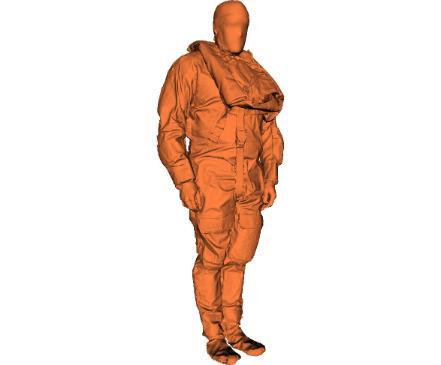
Researchers size up North Sea offshore workers’ helicopter escape potential
Researchers size up North Sea offshore workers’ helicopter escape potential
University of Wolverhampton Professor, Alan Nevill, contributed analytical expertise to a research project which helped to size up the helicopter escape potential of North Sea offshore workers.
The new findings from a joint research project into the size and shape of North Sea offshore workers by Dr Arthur Stewart of Robert Gordon University (RGU) and Oil & Gas UK in Aberdeen have been published in an academic journal following the completion of the high-tech, two year study in 2015.
Research on the size and shape of the North Sea offshore workforce has revealed that some UK workers are larger than average American males and take up more space than earlier data had indicated. Charting their body dimensions has also cast valuable light on their ability to escape through a helicopter window.

Professor Nevill, based in the Faculty of Health, Education and Wellbeing at Walsall Campus, said: “Using portable 3D scanning technology, the team measured 588 male offshore workers and extracted a total of 26 measures, including shoulder width, chest girth, neck girth, and a series of volumetric measurements of the arm, leg and torso.
“Measuring workers in different standing and sitting postures and in form-fitting shorts as well as full survival suits, the research is the most comprehensive study ever carried out to date.”
The measurement data – which will be available under licence from Oil & Gas UK – has informed the team’s focus on offshore worker’s body dimensions and their ability to pass in a confined space, and through a window frame representing the smallest acceptable exit window size on a helicopter.
Mick Borwell, health and safety director with Oil & Gas UK, added: “Many offshore facilities were designed more than 40 years ago based on size information of offshore workers available at that time and which we now know to be very different today. The findings from the research will be invaluable to those designing future offshore safety equipment, survival clothing and space and accommodation requirements offshore.”
Using the measurement data the team has developed a prediction model of workers passing a simulated helicopter window egress, based on dimensions extracted from 3D scans of 404 individuals. The frame size selected for the study was 432 x 356 mm and represents the Civil Aviation Authority’s (CAA) minimum acceptable size for an escape window on a helicopter.
For more detailed information about the research project: http://www.rgu.ac.uk/news/researchers-size-up-north-sea-offshore-workers-helicopter-escape-potential
ENDS
For more information please contact the Media Relations Office on 01902 322003/322736
Date Issued: 24th February 2016
For more information please contact the Corporate Communications Team.


/prod01/wlvacuk/media/departments/digital-content-and-communications/images-2024/240328-Varsity-Line-Up-Resized.jpg)
/prod01/wlvacuk/media/departments/digital-content-and-communications/images-18-19/220325-Engineers_teach_thumbail.jpg)
/prod01/wlvacuk/media/departments/digital-content-and-communications/images-2024/240423-Additive-Research-Centre-Launched.jpg)
/prod01/wlvacuk/media/departments/digital-content-and-communications/images-2024/240320-Uzbekistan-Resized.jpg)
/prod01/wlvacuk/media/departments/digital-content-and-communications/images-2024/240229-The-Link-Resized.jpg)
/prod01/wlvacuk/media/departments/digital-content-and-communications/images-2024/240416-Abi-Dare-Resized.jpg)

